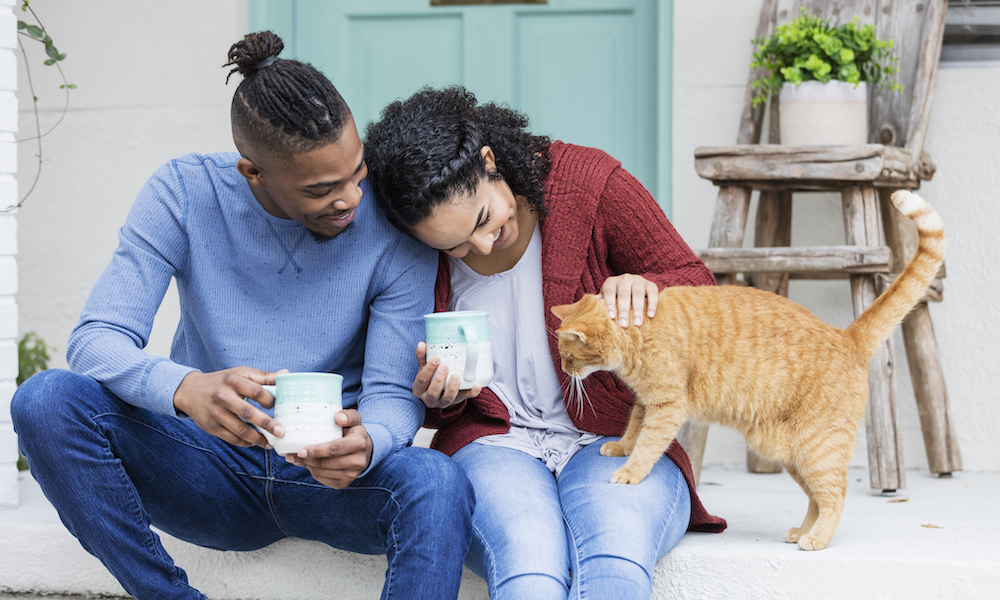We hope that you and your pets are all doing well during this strange time in history! Many of us are preparing to go back to work after several weeks of sheltering at home. If you’re like most people, being at home with your pets has been a highlight of this crazy time. Chances are your pets loved it, too.
Your pets don’t know that you’re about to start going back out to work every day again before long, so we want to offer a little advice about preparing them for this transition. If you had your pet before you started sheltering at home, they know that if you start the car you’ll be leaving home for several hours a day. If you adopted your pet while sheltering at home as many people did, this will be a good introduction for them to being left behind when you go to work.
Stock up on foraging toys.
Buy a variety of foraging toys that can be stuffed with food (e.g. Kongs) and start a stash in the freezer. Stuff them with kibble and wet food, peanut butter and treats, or a variety of options that agree with your dog. Always have some ready in the freezer for when you leave home. These should be special treats that they really love.
Leave your house every day.
Daily outings without your pet can help gear them up for the time when you will leave for work and stay away all day. Vary the length of these trips, and make some of them last a few hours if possible.
- If you drive to work in your car, not only will starting your car every few days while you’re at home help keep your battery operational, but your pet will hear that sound, and expect you to leave. When you come back after a cruise around the neighborhood, they are reminded that you always come back.
- Give them a foraging toy as you head out the door.
- Definitely still take your dog out for walks and trips in the car if that is part of their routine, but sometimes leave them at home to help them understand that you’ll come back.
Do your ‘going to work’ routine.
Our pets pick up on the things we do when we are getting ready for work. They notice that that we take a shower, get dressed, possibly put on make-up, get clothes out of the closet, put on shoes, and sometimes grab a jacket. They recognize what the sound of your keys means.
- You may not want to do as much dressing up as you might need to do for your job, but do some of your routine every day when you do your daily outings, even if you just fake it.
- Mix up your routine. Do the things you do to get ready for work in a different order to take away some of the concerns about your leaving. This should continue even after you’re well back into going to work for real.
- Walk your dog early in the morning as you would before leaving for work, and later in the evening.
- Return to your working schedule for feeding your pet.
Avoid making a big fuss when coming and going.
Work on making coming and going just routine events that aren’t all that exciting. Leave the house with no fanfare whatsoever, and when coming home in the evening, stay low key and don’t interact with your dog much for 10 minutes. This will take some of the stress off of these transitions.
Be less doting during the hours when you would normally be at work.
Have your pet spend time in their crate or a separate room for a few hours a day even while you are in the house to let them understand that sometimes you’re not going to interact with them. This is good information for dogs to have.
This is not to say you should completely ignore your pet when you’re at home, but make those work hours less exciting. Give them an interactive foraging toy during this down time, too.
Be aware of signs of separation anxiety.
If you already know your pet has separation anxiety, this is a good time to talk with your vet and determine if medication is appropriate or if a change in medication is warranted before heading back to the office. If new signs of separation anxiety show up while you leave each day before you head back to work, ask your vet if medication can help them through this transition.
Sign up for a training class.
When training classes open up again, register with your dog. If the class starts before you go back to work and overlaps with after work, that will be great, but if it starts after you are back at work, that can be great too. This is good for confidence building, self-control, and for building great relationships between pets and owners.
We are working toward opening Humane Animal Rescue Training Classes again in mid-July, so keep an eye on our website!
NEWSLETTER SIGN UP
Interested in more content like this? Subscribe & follow us to stay up-to-date.






